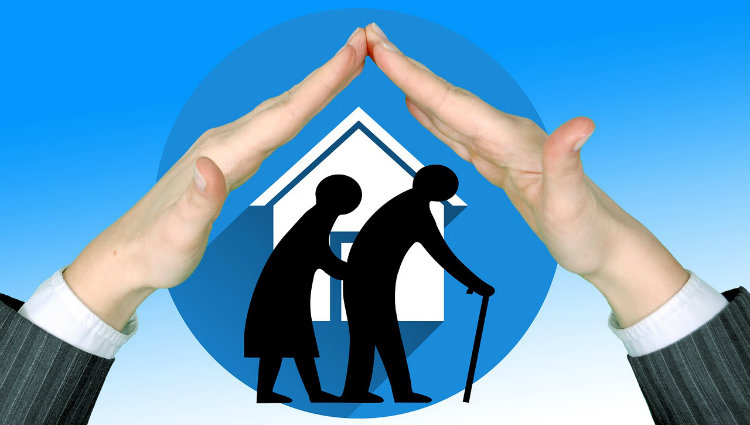Prevent Fall-related Injuries Among Older Adults

Did you know that one in four people age 65 years or older falls each year? Often, these falls result in hip fractures, broken bones, and head injuries. Fall-related injuries can also be the start of a more serious health issue that can carry a heavy quality of life impact, such as long-term disabilities that reduce one’s independence. They are also the leading cause of both fatal and nonfatal injuries for this age group.
Risk Factors for Fall-related Injuries in Older Adults
- As we age, we tend to lose coordination, flexibility, and balance, making it easier to fall. Often, this can be a result of inactivity.
- Aging eyes lead to poor vision, making it harder to see tripping hazards or obstacles in the walking area.
- Some prescriptions or even over-the-counter medications can cause dizziness or even dehydration, which can lead to a fall.
- Foot problems that cause pain, and wearing unsafe footwear such as backless shoes or high heels, can increase the risk of falling.
- Safety hazards in the home or community environment can cause falls.
A Few Statistics
- In 2022, 40,919 older adults aged 65 and older died from preventable falls, and over 3.5 million were treated in emergency departments.
- Falling once doubles the risk of falling again.
- People with hearing loss are nearly three times as likely to fall compared to those with normal hearing, but wearing a hearing aid reduces the risk of falling by 50%.
Reducing Fall-Related Injuries with Home Modifications
Simple home modifications can make it safer for an older adult who wants to age in place in their own home — removing hazards, adding supports, or changing how or where activities are done.
- Be sure to keep all pathways (stairs and walkways) clear.
- Try to fix uneven surfaces when possible. This refers to changes in the level of flooring, such as in doorways or in between carpeting and tile. Either do not use throw rugs or use a rug gripper to secure them safely to the floor.
- Install bright lights. Put light switches at both ends of a stairway or long hallway. Use night lights to make it easier for those late-night trips to the bathroom or kitchen.
- Add supports in the bathroom, such as grab bars near the toilet or in the shower. Put down non-skid strips in the bathtub, too, to help prevent an accidental slip.
- Add supports to stairways by installing handrails on both sides.
Steps to take to prevent falls
- Stay physically active.
- Try both balance and strength training exercises. Learn more about different types of exercises to improve balance and strength.
- Have your eyes and hearing tested. Changes in sight and hearing are linked to an increased risk of falls.
- Get enough sleep. If you are tired, you are more likely to fall.
- Stand up slowly. Getting up too quickly can cause your blood pressure to drop, making you feel a bit shaky.
- Use an assistive device if you need help maintaining your balance while walking.
- Take extra caution when walking on wet or icy surfaces.
- Choose the right footwear. wear nonskid, rubber-soled, low-heeled shoes. Don’t walk on stairs or floors in socks or shoes and slippers with smooth soles.
Six Tips to Help Prevent Falls is an infographic from the National Institute on Aging. Click to view.
- More than one in four people age 65 years or older fall each year, yet many falls can be prevented.
- Learn more about reducing your risk of falling at Falls & Fall Prevention.
Have You or a Loved One Suffered A Fall Accident?
 Injuries from a fall can affect one’s mobility and ability to live independently, taking months for the injuries to heal. It is one of the leading causes of injury and death in the elderly.
Injuries from a fall can affect one’s mobility and ability to live independently, taking months for the injuries to heal. It is one of the leading causes of injury and death in the elderly.
Having an attorney who is your advocate can offer you peace of mind during your recovery. We have a successful track record helping accident victims collect the compensation they deserve. Call the Kansas City-based law firm of Nash & Franciskato at (877) 284-6600. One of our experienced staff members will speak with you personally and will provide you with a free, no-obligation case evaluation.
SCHEDULE YOUR FREE CASE EVALUATION
RESOURCES FOR YOU
If you would like to receive news and blog updates regularly, sign up to receive our email newsletter. Your email address will only be used to send you our newsletter and respond to inquiries.
SIGN UP FOR NEWSLETTER
Past results afford no guarantee of future results, and each case is different and is judged on its own merits. The choice of a lawyer is an important decision and should not be based solely upon advertisements.
Editor’s Note: This post was originally published September 16, 2016. It was reviewed on August 26, 2024, and republished on August 27, 2024. Reviewed and edited June 3, 2025,
Source of feature photo: seniors-1505944_1280 via Pixabay.
Related

 Injuries from a fall can affect one’s mobility and ability to live independently, taking months for the injuries to heal. It is one of the leading causes of injury and death in the elderly.
Injuries from a fall can affect one’s mobility and ability to live independently, taking months for the injuries to heal. It is one of the leading causes of injury and death in the elderly.